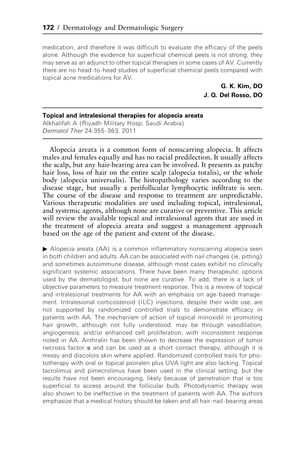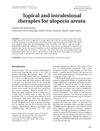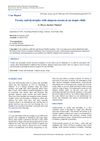Topical and Intralesional Therapies for Alopecia Areata
January 2012
in “
The Year book of dermatology
”

TLDR Many treatments for alopecia areata have inconsistent results; for under 10s, use minoxidil with a corticosteroid, and for over 10s, add ILC and consider diphenylcyclopropenone for widespread cases.
The document reviews various treatments for alopecia areata (AA), a common, unpredictable inflammatory nonscarring alopecia affecting both children and adults, which can also be associated with nail changes and autoimmune diseases. The efficacy of intralesional corticosteroid (ILC) injections for AA is not supported by randomized controlled trials, and the response to topical minoxidil is inconsistent. Anthralin, although messy and skin-discoloring, can be used as short contact therapy. Phototherapy with psoralen plus UVA light, topical tacrolimus, pimecrolimus, and photodynamic therapy have not shown encouraging results in treating AA. The authors recommend no routine testing for AA patients and suggest treatment should consider the patient's age and disease extent. For patients under 10 years, a combination of minoxidil 5% with a midpotency topical corticosteroid is recommended as first-line treatment. For those over 10 years, ILC is suggested along with 5% minoxidil and topical corticosteroid therapy as adjuncts. For extensive disease in patients over 10 years, topical therapy with diphenylcyclopropenone may be used, expecting allergic contact dermatitis. Topical corticosteroid therapy and ILC are preferred for localized disease.

